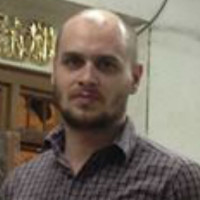
Louder than bombs: Syrians take to the streets, again
Five years of carnage, hate and madness have disfigured Syria - some would say for good - but the damage hasn't been sufficient to extinguish the flames of defiance.
Although liberated from the tyranny of the regime, life in rebel territories is far from easy for Syrian activists.
But amid the bombings, sieges, regime snipers, and sometimes threats from local extremist groups, revolutionary councils have defied the odds and continue to resist.
They have also been responsible for running civilian councils, hospitals, schools, rubbish collections, and elections in districts across Syria.
Saturday's ceasefire has given residents of "free" areas a rare respite from war and allowed civil movements to re-emerge from the periphery of Syria's war.
|
— Kenan كنان (@KenanRahmani) March 2, 2016" style="color:#fff;" class="twitter-post-link" target="_blank">Twitter Post
|
Over the past five days, activists and residents have taken to the streets in rebel-held towns to protest against the regime. They also reaffirmed their commitment to freedom and democracy, and called for rebel unity.
Many of these colourful protests were led by the same activists who organised demonstrations in 2011, but were later made impossible due to regime sniper fire, mortars and bombs.
"The people want the downfall of the regime," people chanted on the streets of Damascus' suburbs this week, just as they did during the early days of the revolution.
"In many ways it wasn't surprising, because I've often thought that if the bombs stop falling civil society may regain its former place in the movement," said Leila al-Shami, a British-Syrian writer who co-authored Burning Country: Syrians in Revolution and War.
"But it's amazing to see Syrians' strength and courage and their unwavering commitment to be free. It's also good to see women taking to the streets in some areas. They've often said that the security situation has prevented them from doing so."
Indeed, Syrians of all background have been seen on the streets singing, pounding drums, waving Syria's pre-Baathist flag, and dancing the dabka in union.
In Arbaen, an opposition-held Damascus suburb, one protester with a loudspeaker reminded residents of the principles of the revolution.
The Syrian regime has sought to exterminate these sights from the eyes of the world, since pro-democracy, peaceful and civilian protests sprung up across the country five years ago.
|
— Kenan كنان (@KenanRahmani) March 2, 2016" style="color:#fff;" class="twitter-post-link" target="_blank">Twitter Post
|
Mass rallies calling for reforms in 2011 were broken up with broken skulls, when riot police charged into the peaceful crowds.
Later, bullets did the job, and led brave soldiers to defect their posts and join the demonstrators.
There has been a lot of bad blood since then. Despite the multi-denominational character of the early protests (which still remains the case among the opposition) Syria has become fragmented, and in many respects split on religious lines.
Although most fighters in the rebel militias are from Syria's Sunni majority, sectarianism has been a cornerstone of regime policy.
Damascus had sought legitimacy by portraying itself as a secular government protecting Syria's mosaic of ethnic and religious diversity.
By driving Syria's secular-democratic movements underground and militarising the conflict it has changed the narrative and aesthetics of the revolution.
Bombs hid the activists away from the world's eyes, and thanks to an ultra-cautious and gullible Western media the regime has in part achieved its goal.
When mentioned in the media, Syrian opposition and rebel groups are often faithfully affixed with "Sunni", "Islamist", "extremist" and occasionally "terrorist".
Meanwhile, Damascus bolstered the ranks of its army which was decimated by defections. Shabiha gangs, Shia militias and Iranian troops have now transformed the so-called Syrian Arab Army into a confederation of theistic tribes and thuggish militias.
|
— Rouba (@roubahaji) March 1, 2016" style="color:#fff;" class="twitter-post-link" target="_blank">Twitter Post
|
Lebanese Hizballah, Iran's Revolutionary Guard, and Shia Iraqi and Afghani militias now make up the vanguard of the regime's recent advances, backed of course by Russian air power.
The rebel towns have suffered more than other parts of Syria. Yet this week we have seen a glimmer of hope amid the cruelty of civil war and barbarism of bombing.
The protesters' calls were not for sectarian-tinged revenge, or even sharia law, but stayed true to the original principles of the revolution - freedom for all, and oppression by none.
When the bombing and fighting ends for good in Syria we might see a country emerge from the ashes that people hoped for in 2011. But at the price of hundreds of thousands of dead.
Yet the past week has shown that it is possible for Syrians to overcome the nightmares they have experienced, and perhaps one day their differences will become the building blocks for a better, stronger and united Syria.





 Follow the Middle East's top stories in English at The New Arab on Google News
Follow the Middle East's top stories in English at The New Arab on Google News


